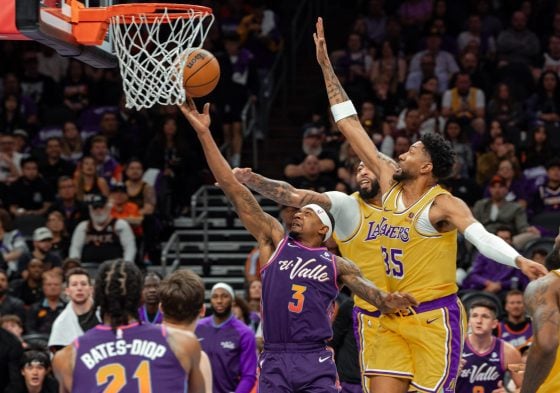It’s gotta be hard for Brad.
Once the floor general pacing the sidelines of TD Garden, Stevens now has the 50,000-foot view of the franchise as the team’s President of Basketball Operations. Instead of concentrating on the minutiae of the X’s and O’s, he’s now responsible for all the millions of dollars of the salary cap. Instead of focusing on winning just one game, he’s charged with winning games plural, seasons plural, and ultimately, raising banners plural.
After spending twenty years as a coach, he must miss it at times, especially now that he’s quickly built a team in his own image.
When Stevens became head coach in 2013, he was presented a fairly blank slate. Danny Ainge had swiftly cleared the cap sheet and stocked the cupboard full with first round picks. The Celtics were going to be rebuilt from scratch with Stevens’ input in mind.
He accepted the job with one caveat in mind. He reportedly refused to tank, and that fighting spirit translated quickly to the product on the floor. After a 25-57 rookie coaching campaign, the Celtics made the playoffs for seven consecutive seasons, including three conference finals with arguably three very different teams.
Photo By Christopher Evans/Digital First Media/Boston Herald via Getty Images
To some extent, Stevens may have been the victim of his own success. After taking a ragtag bunch fueled by Isaiah Thomas to the playoffs in his second and third year, Boston started becoming an attractive destination for free agents. It started with the unexpected interest from Al Horford (and a meeting as a finalist with Kevin Durant), then a reunion with former Bulldog Gordon Hayward the following summer, and then a late-August trade that netted Kyrie Irving.
It’s hard to say whether or not Stevens championed those moves, but in the moment, those felt more Ainge-motivated. As a player, Ainge won two championships with the Big Three of Larry Bird, Kevin McHale, and Robert Parish (and came close with Clyde Drexler and the Blazers in 1992 and Charles Barkley and the Suns in 1993) and raised Banner 17 from the front office after pairing Paul Pierce with Kevin Garnett and Ray Allen 2007. After spending forty years as a player, head coach, broadcaster, and executive, Ainge understood that age old NBA maxim that superstars won championships and during Stevens’ tenure, he was laser focused in bringing them to Boston.
This is not to suggest that Stevens and Ainge weren’t aligned in their mission to win games, but the job of coach and GM are very different. It’s unclear what their relationship and/or power dynamic were when it came to big decisions like trading for Kyrie or pursuing Kemba Walker two years later. But I think it’s fair to say that Stevens didn’t benefit from consistency. The team seemed to always be in flux and cursed with injury-related bad luck.
And while Stevens’ first season in the front office has been marked with a flurry of player movement and salary cap machinations, his first few moves might provide some insight into Stevens’ mindset in team-building versus his predecessor. It’s possible that Stevens might at some point take a big, Danny-Ainge-as-a-Toronto-Blue-Jay swing and try and hit a home run with a blockbuster trade in the future, but his approach so far has been methodically hitting singles. A shrewd use of a TPE brought in Josh Richardson and he signed Dennis Schroder at the bargain price of the mid-level exception. Seven months and a few first round picks later, Stevens turned them and a handful of other players into Derrick White and Daniel Theis.
They’re not superstars or even stars by any stretch of the imagination, but you have to think that they’re the type of player that Stevens would have recruited back at Butler and would have loved to coach in the pros. Even though some have criticized him for possibly overpaying, others have lauded him for identifying guys he likes and being swift and deliberate about getting them in green. Even his recent signing off Kalen Martin to a ten-day contract suggests that when Stevens thinks he knows somebody, he’ll get them eventually; Stevens recruited Martin to Butler a lifetime ago, but never had a chance to coach him.
To some extent, this feels like a continuation of Stevens’ coaching, however detached. You have to think that he had a voice in the room when the Celtics drafted Marcus Smart, Jaylen Brown, Jayson Tatum, and Robert Williams. He nurtured their development and by virtue of being with them over the last several years (eight for Smart), not only does he know their games between the lines, but how their personalities and mindset fit.
Maybe this move to the front office is the evolution of his basketball mind. As good as Stevens was as a coach, his higher calling might not just be seeing how the pieces move as X’s and O’s on the whiteboard, but identifying players he likes in the league and tracking how they move in the NBAverse and hopefully, to Boston. With White and Theis now in tow along with the Celtics’ core four, that six-man rotation is now locked in through 2024 and beyond. It’s a strong foundation for the franchise that Ime Udoka can now build on with comfort of consistency.
This isn’t meant to be suspicion or innuendo or a knock on Udoka at all, but I can’t help but think that Stevens would have loved coaching this team. I’m not suggesting that Ainge mishandled Stevens’ coaching tenure either. The circumstances were different and most GM’s would have made the same decisions afforded the same opportunities. This is all to say that the 2021-2022 Celtics are very much a Brad Stevens team without Brad Stevens on the bench.






